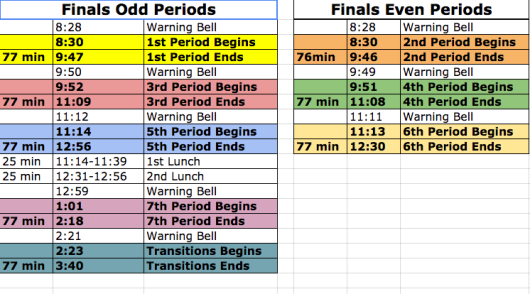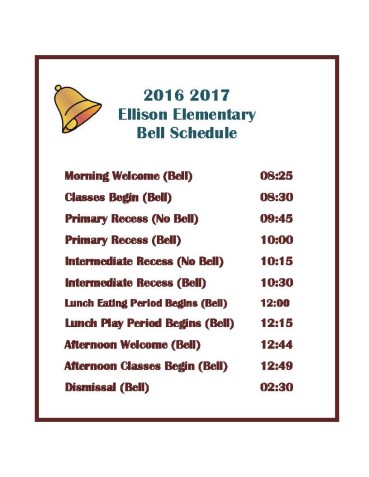Bell Schedules
The second school practice, or “un-commandment” as I refer to it in my book, Learning Unleashed Re-Imagining and Re-Purposing Our Schools, is the revered school bell. To be perfectly clear, there is nothing inherently wrong with bells, whistles, or other instruments that gather attention for an intended purpose. Examples include sports, performances, outings, timed events, etc. However, when used to cut off or compartmentalize learning it has little to no value.
When we designed the typical K-12 school day, we determined that portions of time are set aside to administer subjects. Grade level, content material such as math, reading, science, social studies, etc. are taught in regular and metered doses weekly or daily. In order to cover all the determined subjects, minutes are assigned in various intervals and adhered to throughout the course of a school year.
Elementary grade level students may have a bell schedule that sets aside one hour daily for math instruction, an hour and a half for reading, and perhaps thirty minutes for social studies and thirty minutes for science. Usually, physical education, music, art and other special classes which might include a visit to the computer lab or library, may also be scheduled throughout the week. This is how we’ve done it for years. Few question this format.
The teacher must keep one eye on the clock and the other on the pace and needs of the students in her/his classroom. At times, teachers may extend or shorten as needed based on extenuating factors. However, due to curriculum pacing and scheduled reporting periods, this practice can’t be a regular occurrence or the students will fall behind. Those who do fall behind are a mixed bag. Some may get interventions, some may get nothing.
Unfortunately, those who need more time and even those who need less time are trapped in a rigid, unyielding schedule. The whole bell schedule scheme falls apart right here and guarantees that only those who can keep the determined pace during the allotted time frames will succeed.
Apparently, we have come to believe that learning is like baking a cake. We add and mix all the right ingredients, then we bake it for 20 minutes, 40 minutes, or an hour and “Voila” it’s done. Or so we hope.
The problem with this mind set is the notion that we all learn in the same amount of time. We don’t, we never will. Yet schools set schedules to cover material, keep orderly movement and continue the damaging practice of allocating time limits to learning. Factory schooling will never change it’s scheduling design because it refuses to acknowledge that every child is different.
Factories mass produce duplicate products, they don’t make original ones. Originals take too much time and are not cost effective.
Proponents of school reform offer many and varied ideas to promote and enhance learning but few ever tackle the sacred cows that I mention in Learning Unleashed. Bell schedules is one of them. A change of this magnitude requires a deep understanding of how we learn and a deliberate effort to make it happen. It requires us to rethink the concept of TIME.


What if we allowed children to take as long as they needed to learn something? What if we removed the grade level schemata? What if teachers spent more or less time based on what their students needed? What if we set up a daily schedule that honored learning not the clock? What if we wanted to produce originals not duplicates?
I’ve heard that school curriculum is a mile wide and an inch deep. It’s true, depth takes time. In school, we already have plenty of time but not for depth because there is too much breadth. If you gasp while reading these next few statements, please consider the why. We don’t need to add hours to the school day and we don’t need before or after school programs. Why?
Simply put, if we give children the time and support they need without rushing them through or holding them back with pre-determined minutes, grade level time lines, and ineffective grading practices, they would learn both depth and breadth. Translated to practice this means a removal of the time honored grade levels by age and ten month baking period as well as grading everything.
To some, these ideas are heresy and to others an unnecessary departure from what they believe has worked for years. It all depends upon one’s philosophy of learning. Mine is rooted in the mind and heart of every child and young person who the schooling system has robbed of authentic learning via rigid time constraints.
Next in the series is length of school day and school year. Stay tuned…

Love the concept. Where are the willing minds?
LikeLiked by 1 person
Agree…Willing minds indeed! Many teachers know this intuitively but are handcuffed by the system that operates out of convenience. As the adage implies, where there is a will there is a way. Thanks for reading my blog!
LikeLike